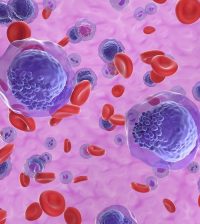Don't Miss
- Navigating Your Midlife Crisis: Embracing New Possibilities
- City Raccoons Showing Signs of Domestication
- Mapping the Exposome: Science Broadens Focus to Environmental Disease Triggers
- One Week Less on Social Media Linked to Better Mental Health
- Your Brain Changes in Stages as You Age, Study Finds
- Some Suicide Victims Show No Typical Warning Signs, Study Finds
- ByHeart Formula Faces Lawsuits After Babies Sickened With Botulism
- Switch to Vegan Diet Could Cut Your Greenhouse Gas Emissions in Half
- Regular Bedtime Does Wonders for Blood Pressure
- Dining Alone Could Mean Worse Nutrition for Seniors
Health Tip: Understanding Blood Clots
By LadyLively on December 14, 2018

Blood clotting is the body’s way of preventing excessive bleeding when a blood vessel is injured.
Typically, the body will dissolve the clot after the injury has healed,
the American Society of Hematology says.
But occasionally, a clot forms despite no obvious injury to a vessel, or the clot doesn’t dissolve on its own. This can pose the dangerous possibility of limiting oxygenated blood to tissues and organs such as the heart or lungs.
Or a clot may impede the flow of deoxygenated blood back to the heart.
The society says factors that can increase the risk of developing a blood clot include:
- Obesity.
- Pregnancy.
- Prolonged inactivity.
- Smoking
- Some oral contraceptives.
- Certain cancers.
- Surgery.
- Advancing age.
- Family history of blood clots.
- Diabetes.
- High blood pressure.
- High cholesterol.
Source: HealthDay
Copyright © 2025 HealthDay. All rights reserved.










